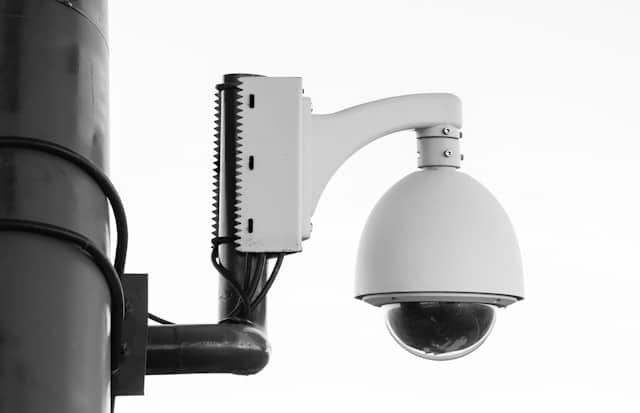What’s the Best Method to Install a Geothermal Heating System in a Residential Area?

In the depths of the Earth’s crust, beneath the surface that we tread on daily, lies a dependable and renewable source of energy. It’s known as geothermal energy, and it’s becoming an increasingly popular choice for homeowners looking to reduce their carbon footprint and energy bills. Geothermal heat systems harness the planet’s constant subterranean temperature to provide heating and cooling for residential buildings.
As a renewable energy source, geothermal is often touted as a perfect solution for many of our energy concerns. However, like any other system, it requires careful planning and proper installation. In this article, we’ll delve into the best methods to install a geothermal heating system in a residential area.
In parallel : What’s the Best Way to Combine Thermal Curtains With Smart Home Systems for Energy Efficiency?
Understanding the Geothermal Heat System
Before we dive into the nitty-gritty of installation, let’s get a grasp of how a geothermal heat system operates. Basically, this system uses the ground as a heat source in the winter and a heat sink in the summer. This design takes advantage of the moderate temperatures beneath the Earth’s surface to boost efficiency and reduce the operational costs of heating and cooling systems.
A geothermal heat pump (GHP), sometimes known as a Ground Source Heat Pump (GSHP), is the heart of the system. The pump circulates a mixture of water and antifreeze through a loop of pipes buried underground. In heating mode, the liquid absorbs the Earth’s warmth and carries it to the heat pump, which then distributes the heat to the home. In cooling mode, the process is reversed.
Have you seen this : How Can You Create a Vintage Gaming Room with Retro Consoles and Decor?
Types of Geothermal Heat Systems
There are primarily four types of geothermal heat systems – horizontal, vertical, pond/lake, and open-loop. The choice of system largely depends on the space availability and soil conditions of your home.
Horizontal loops are usually the most cost-effective for residential installations, particularly for new construction where sufficient land is available. They are installed in areas adjacent to the building at depths capable of absorbing the Earth’s heat.
Vertical loops are ideal when space is limited. Holes are bored deep into the ground, and pipes are inserted vertically. This type of system has a higher installation cost but requires less space.
A pond/lake loop system is a great option if you have a body of water nearby. The loop is simply coiled and sunk to the bottom of the water source.
Lastly, an open-loop system uses groundwater as a direct energy source. If a sufficient supply of good-quality water is available, this can be a cost-effective choice.
Installation Process of a Geothermal Heat System
The process of installing a geothermal heat system is complex and requires expert knowledge. Here are the key steps involved in the process:
Step 1: Initial Consultation and Site Evaluation
During the initial consultation, an HVAC specialist will assess your home’s heating and cooling needs, the size of your property, the soil condition, and access to water sources.
Step 2: System Design
Based on the initial consultation, the HVAC specialist will design a system that best fits your home. This will include deciding the type of loop system to be used, the pump’s size, and the system’s layout.
Step 3: Excavation and Loop Installation
The next step involves excavating the land where the loop will be installed. After excavation, the loops are inserted into the ground or water source, depending on the type of system chosen.
Step 4: Indoor Unit Installation
After the loop has been installed and tested, the indoor unit, which includes the heat pump and air handler, is installed. The indoor unit is connected to the loop system and your home’s ductwork.
Step 5: System Testing and Commissioning
Upon completion of installation, the system is tested to ensure all components are working properly. Once satisfied, the system is commissioned, and you can start enjoying the benefits of a geothermal heating system.
Cost Implications and Energy Efficiency
The initial cost of installing a geothermal heat system can be daunting. Depending on your home’s size and the system type, installation costs can range from $10,000 to $30,000. However, these systems are incredibly energy-efficient, which can result in significant savings on your energy bills.
According to the US Environmental Protection Agency, geothermal heat pumps can save homeowners 30-70% on heating and 20-50% on cooling costs compared to conventional systems. With such savings, the system’s payback period is typically 5 to 10 years. Additionally, various federal, state, and local incentives are available to help offset the installation costs.
Geothermal heating and cooling systems not only make your home more comfortable and reduce your energy bills but also contribute to a healthier planet. Just remember, proper installation is key to maximizing its benefits. So, hire a professional HVAC contractor who specializes in geothermal and ensure the installation is done correctly.
Maintenance and Longevity of a Geothermal Heating System
Once the geothermal system is installed, it is crucial to maintain it properly to ensure its performance and longevity. The heat pump, the core of the geothermal system, has a lifespan of about 15 to 20 years, while the underground loops can last for more than 50 years.
There are several measures homeowners can take to maintain their geothermal heating system. One of these is to have the system inspected by a professional HVAC contractor annually. They will check the heat pump, the air filter, the system’s fluid levels, and the overall operation to ensure everything is running smoothly. Homeowners should also keep an eye out for any sudden changes in the system’s performance, such as unexpected increases in energy bills or uneven heating or cooling. These could be signs that the system needs repair.
Proper maintenance of the geothermal heating system can extend the system’s lifespan and ensure it runs at peak efficiency. This results in continual savings on heating and cooling costs over the system’s lifetime.
Conclusion: The Worth of Geothermal Installation in Residential Areas
In conclusion, geothermal systems are an efficient and eco-friendly method for heating and cooling homes. Although the initial costs can be high, they offer significant savings in the long run, making them a worthwhile investment.
Choosing the right type of loop system is crucial for the performance and efficiency of the geothermal system. Whether it’s a horizontal or vertical closed loop, a pond/lake loop, or an open loop system, the choice should be based on the specific conditions of your property. Remember, a professional HVAC contractor can help determine the most suitable system for your home and carry out the installation to ensure optimal performance.
Throughout the geothermal installation process, it’s essential to pay attention to every detail, from initial consultation and system design to excavation, loop installation, and system testing. Proper installation will ensure your system operates at peak efficiency, providing comfortable heating and cooling while keeping energy costs low.
Lastly, regular maintenance can greatly extend the system’s lifespan and ensure it continues to work effectively for many years.
With the combined benefits of cost savings, energy efficiency, and environmental friendliness, it’s clear that installing a geothermal heating system in a residential area is a smart choice. Although it requires careful planning and execution to get right, the benefits are worth the effort, making it a practical solution for renewable, reliable, and efficient home heating and cooling.
